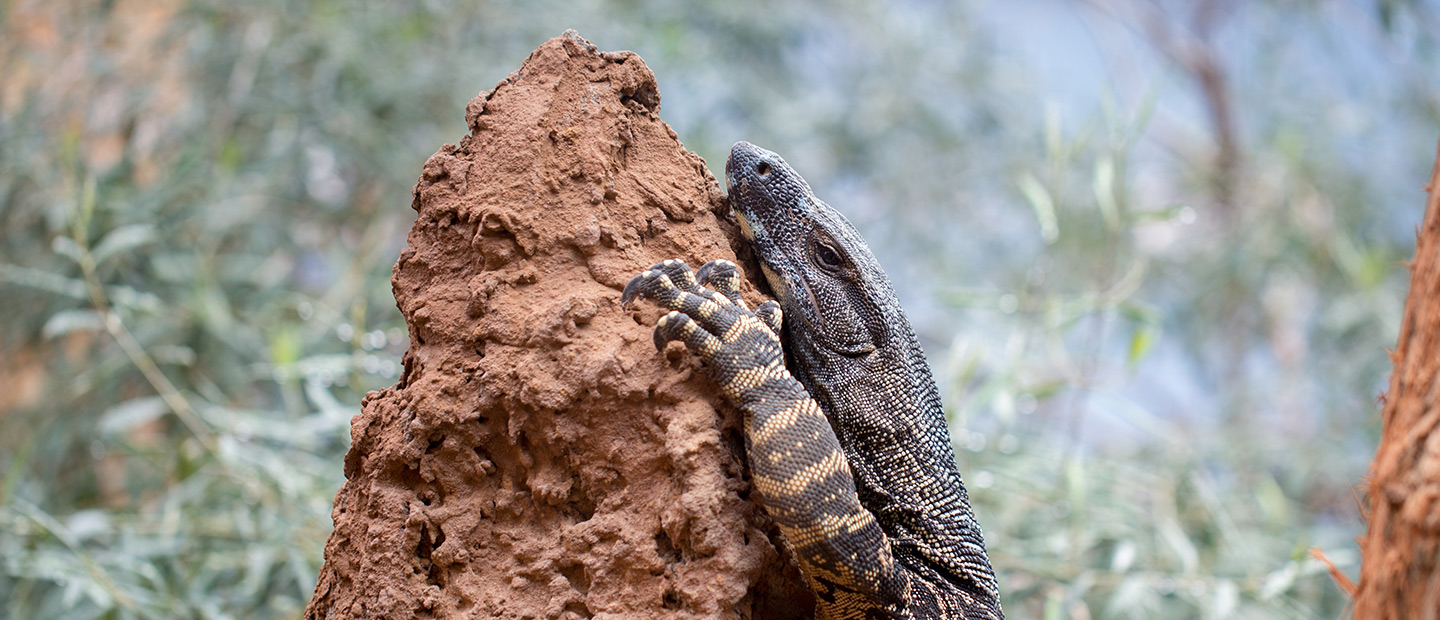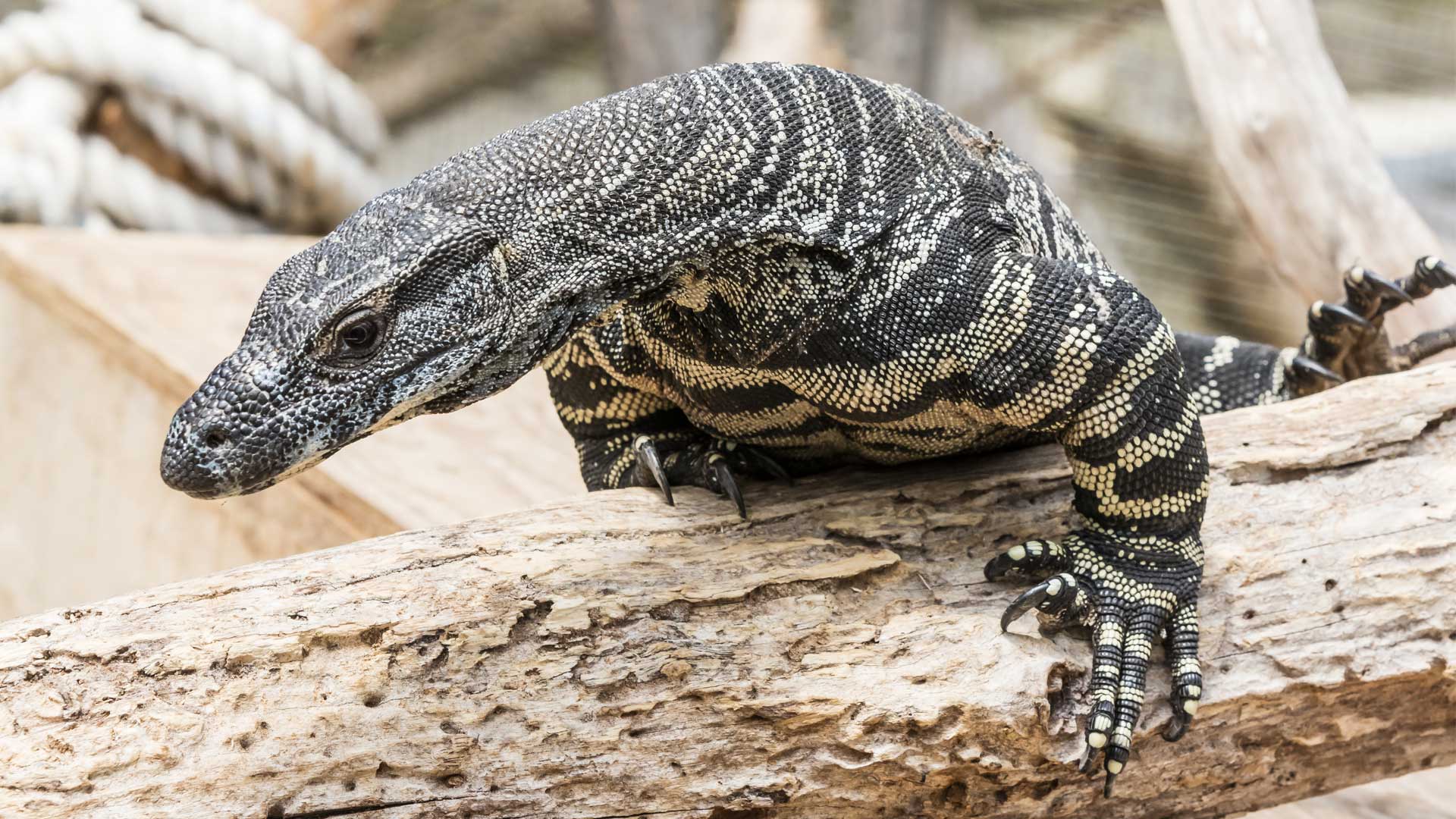Walking with giants.
Lace monitors are the second largest monitor lizard in Australia and are among the largest lizards in the world. Averaging 1.5m in length, they can grow up to 2m. Two thirds of this length is made up of their tail, which can be twice the length of their body! The length of their tail is used for balance when climbing, as a whip for defence, for swimming, and for posturing to rival lace monitors!
Lace monitors have a forked tongue like snakes - this is an adaptation to further enhance their highly developed combined senses of smell and taste. As they flick their tongue in and out, it collects molecules that are transferred to the Jacobson’s organ via two little pits in the roof of their mouth. This sense is so good, they can tell the difference between prey items from a long distance and in which direction they lie, whether another lace monitor in the area is male or female, and whether it is a resident or non-resident to the area. Imagine being able to know all that with your tongue!
As well as a great sense of smell and taste, they have excellent vision and acute hearing.






